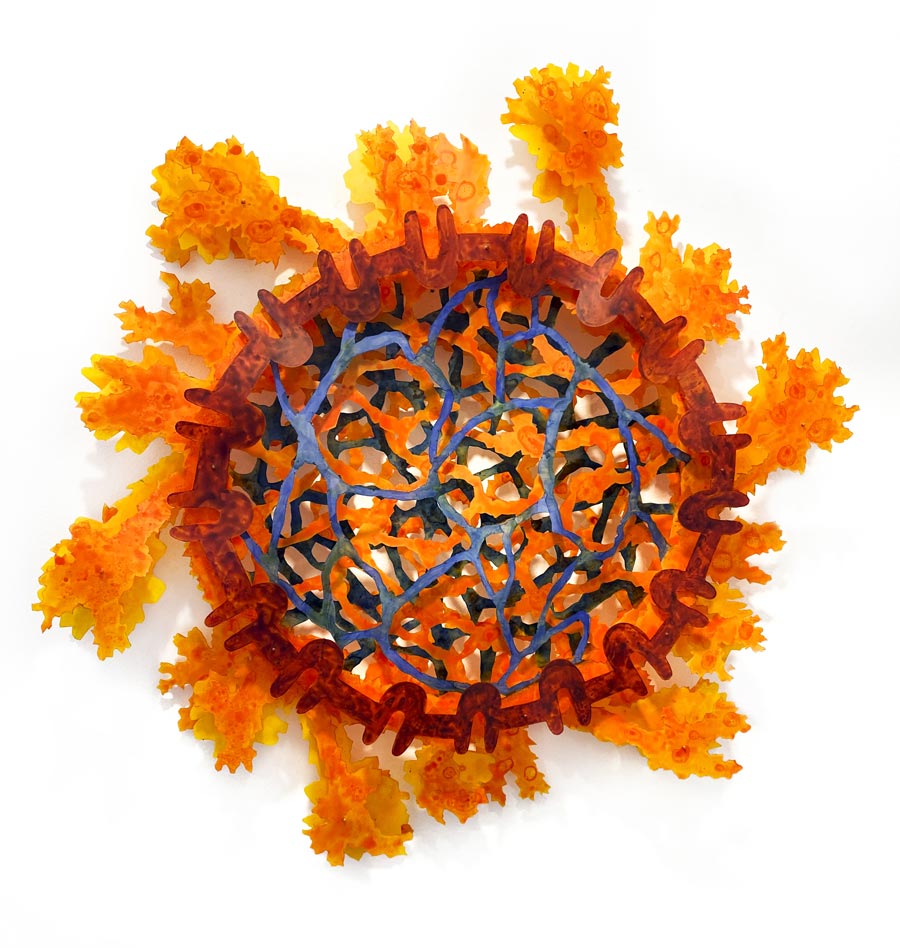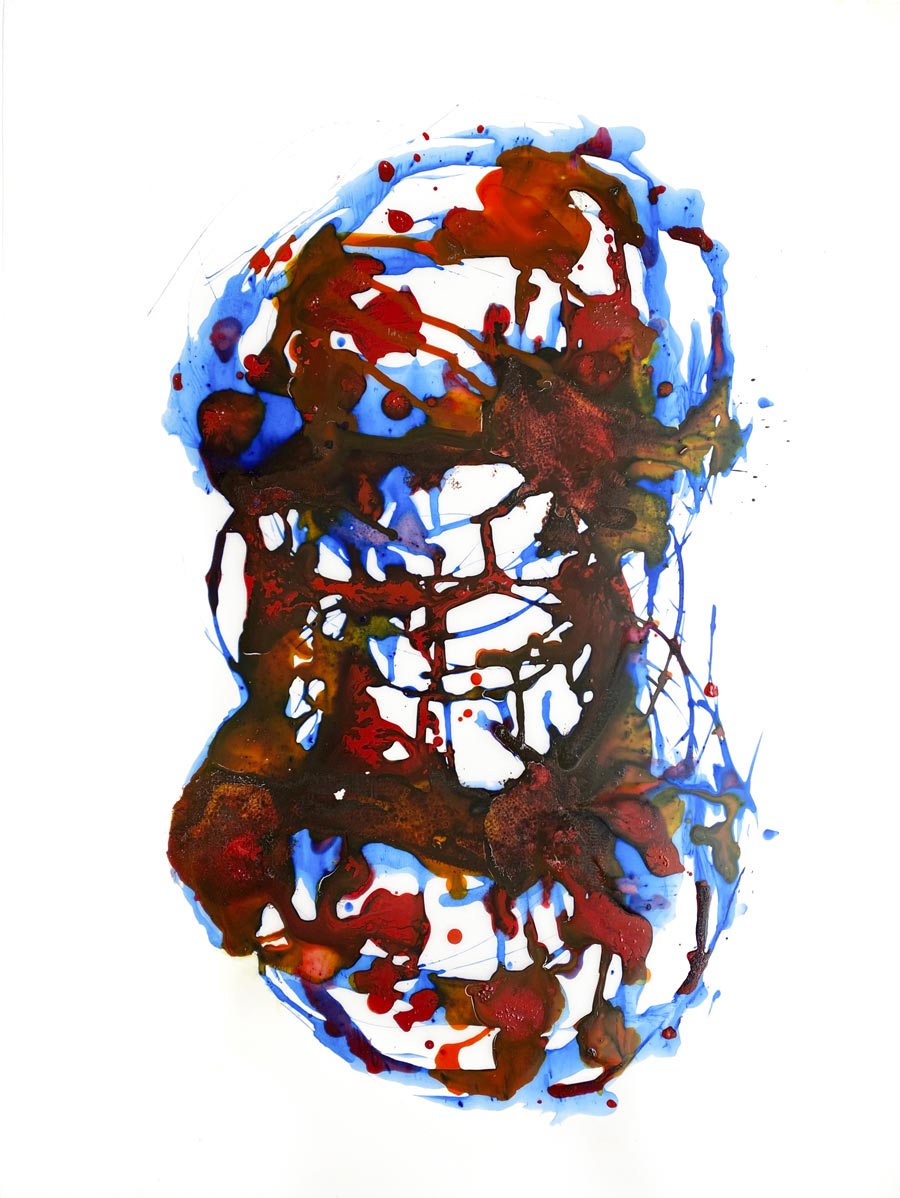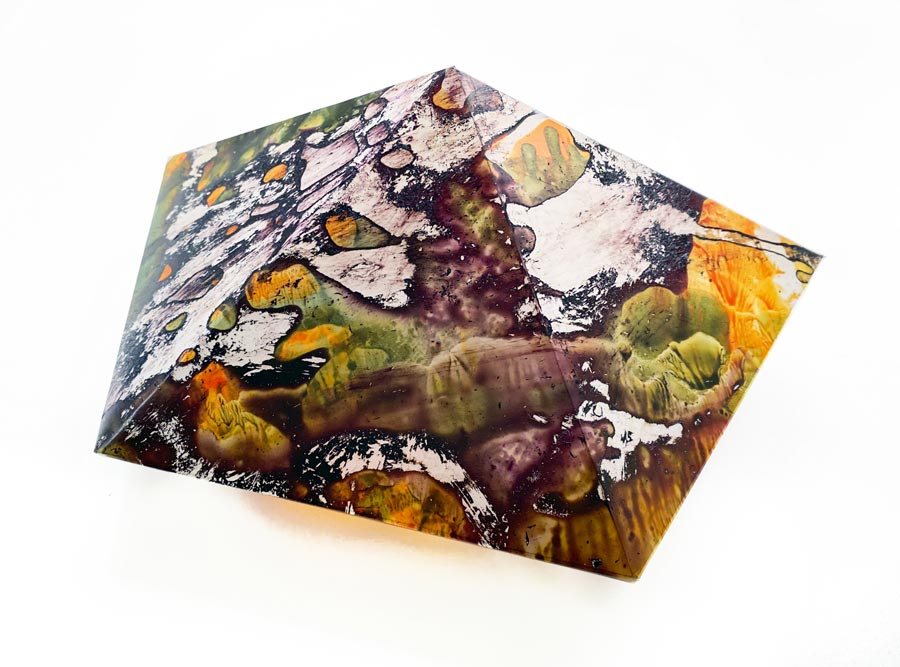When Science and Art Collide
Now on display through December 12 at the American University Museum is Reveal: The Art of Reimagining Scientific Discovery, a collection of paintings, sculptures, and installations by Rebecca Kamen, an artist who built her career in the Washington, DC, area. The thematic pieces highlight Kamen’s interest in the natural world, her personal experience living with a brain tumor, the COVID-19 virus, and how the creative processes in art and science are interconnected.
The exhibition is presented by the Alper Initiative for Washington Art, which is made possible through a generous endowment from American University alumna, artist, and art advocate Carolyn Small Alper (1927-2020).
Read the exhibition catalog online, featuring essays by curator Sarah Tanguy, Perry Zurn (AU Assistant Professor of Philosophy) and Danielle Bassett (Department of Bioengineering at the University of Pennsylvania), and a foreword by Sara Nieves-Grafals (retired clinical psychologist and member of the AU College of Arts and Sciences Advisory Council).

Corona 3, 2020. Acrylic on mylar, 18 x 18 x 4 in. Courtesy of the artist.
At the Intersection of Art and Science

In Reveal, Rebecca Kamen unlocks curiosity as the creative link between the arts, humanities, and sciences, exploring the symbiotic relationship behind scientific research and art’s development. She says she seeks “the truth” through observation. Her art is informed by wide-ranging research into cosmology, history, philosophy, and by connecting common threads that flow across various scientific fields to capture and re-imagine what scientists see.
Kamen is a professor emerita of art at Northern Virginia Community College, where she has taught for 35 years, and artist-in-residence in the Computational Neuroscience Initiative and the Department of Physics and Astronomy at the University of Pennsylvania. She has exhibited and lectured both nationally and internationally including in Australia, Austria, Chile, China, Egypt, Hong Kong, Korea, Spain, and Singapore. She has been the recipient of a Virginia Museum of Fine Arts Professional Fellowship, a Pollock-Krasner Foundation Fellowship, two Strauss Fellowships, and a Travel Grant from the Chemical Heritage Foundation. While artist in residence in the neuroscience program at National Institutes of Health, Kamen interpreted and transformed neuroscience research into sculptural form. Her artwork is represented in many private and public collections.
Collaborations and Connections

Warming 4, 2019. Acrylic on mylar, 24 x 18 in. Courtesy of the artist.
Reveal is the culmination of three years of work and collaborations with a wide range of scientists and researchers. The exhibit was inspired by the work of AU Assistant Professor and Director of Undergraduate Studies in Philosophy Perry Zurn. A political philosopher, Zurn studies forces and histories of change, focusing on the power of curiosity, political resistance, and transgender life.
Three other American University faculty members worked with Kamen as she developed the exhibition. Assistant Professor of Physics Silvina E. Guidoni had many conversations with Kamen about heliophysics. She says that Kamen’s enthusiasm for learning about her area of research and her knowledge of the history of scientific discovery have been sources of inspiration for her own work. “Rebecca’s skilled and creative artwork invites us to explore interdisciplinary connections,” she explains. “I hope this exhibition helps bridge the artificial gap we often see between the sciences and the arts, both of which are full of beauty and precision.”
Nathan L. Harshman, professor of physics and director of the NASA DC Space Grant Consortium, sees the symmetries, real and distorted, in Kamen’s art. “Like points on the infinite boundary of a fractal, [Kamen’s] work explores the ragged edge where the cosmos of universal symmetry breaks and the chaos of the particular and the individual emerges,” he writes in the exhibition catalog. And Associate Professor of Neuroscience Catherine Stoodley, who focuses on the role of the human cerebellum in cognition, cognitive development, and neurodevelopmental disorders, writes about the beauty and essence of Kamen’s artwork that focuses on the brain. “Rebecca Kamen’s sculpture “Hemispheres” captures the shape, activity, and intricacies of the cerebellum, one of the most beautiful brain structures.”
Kamen also collaborated with scientists at the National Institutes of Health scientists studying COVID-19, addiction researchers at the University of Pennsylvania, and other experts across disciplines and institutions.
For More Information and to Visit the Show
 Illumination 1, 2020. Acrylic on mylar, 9 x 9 x 6 in. Courtesy of the artist.
Illumination 1, 2020. Acrylic on mylar, 9 x 9 x 6 in. Courtesy of the artist.
For more information about the show, visit Reveal: The Art of Reimagining Scientific Discovery. For visiting information, see the museum’s Plan Your Visit page.
